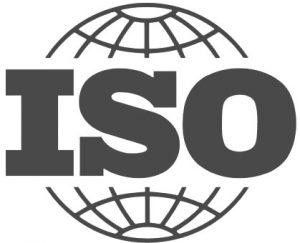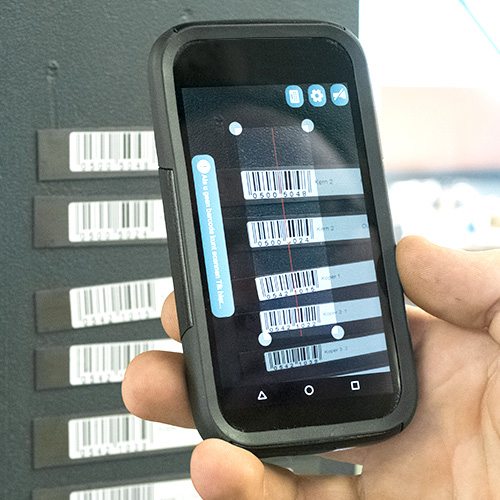Certified quality
Family members are involved wherever possible, as should be the case in a true family business. And so it was with the ISO 9001 certification.  Mirjam Loedeman is the Quality Assurance manager and ISO coordinator. She has worked for the company in various administrative positions ever since her student days. When the need arose to capture and certify quality, it was only logical that she should assume that responsibility.
Mirjam Loedeman is the Quality Assurance manager and ISO coordinator. She has worked for the company in various administrative positions ever since her student days. When the need arose to capture and certify quality, it was only logical that she should assume that responsibility.
“We set out on the road to ISO certification as I was about to round off my facility management studies. It became increasingly important for many of our clients to buy products that had been certified for quality. It was an important issue for us too. The knowledge and experience of management and staff is crucial when working in a specialised field over a longer period of time. Obviously, this brings with it a certain amount of risk. There’s a problem in the making if someone with this experience is suddenly no longer available. The ISO quality management system records and safeguards this eventuality.”
External expertise
 “Defining operating instructions is something we can do ourselves, but we commissioned the external expertise of Daska as a sparring partner. Where do you begin when reviewing the NEN standard manual? To start with, by picking up tips and tricks from the experts who deal with this kind of material on a daily basis. So that’s how we got started. And that resulted in a Quality manual. One of the benefits when compiling this kind of protocol manual is that you are obliged to take a comprehensive look at the way you run your business. You zoom in on your processes and procedures and take a hard look at how they are managed and if they could potentially be managed in another or a better way.”
“Defining operating instructions is something we can do ourselves, but we commissioned the external expertise of Daska as a sparring partner. Where do you begin when reviewing the NEN standard manual? To start with, by picking up tips and tricks from the experts who deal with this kind of material on a daily basis. So that’s how we got started. And that resulted in a Quality manual. One of the benefits when compiling this kind of protocol manual is that you are obliged to take a comprehensive look at the way you run your business. You zoom in on your processes and procedures and take a hard look at how they are managed and if they could potentially be managed in another or a better way.”
Manual
 Loedeman started to gather and consolidate knowledge and operating protocols. “These are now available for all our employees. You can see that general knowledge levels in the company are on the rise. Sharing knowledge is now done in a structural manner and each and every employee sees it as a serious part of their work. In the beginning, there were naturally the usual skeptical reactions about all the additional paperwork, as some people typically see these type of processes, but that’s behind us now. Everybody can see the added value because you can monitor and control the way you operate, and work according to clear instructions. Staff themselves offer suggestions for procedural improvements. It feels like a value add because staff see that quality is taken seriously throughout the chain, from an incorrect delivery to ideas for process improvements. We have compiled a to-do list with these proposals that is available for everyone on the internal network. And it is consulted more and more.”
Loedeman started to gather and consolidate knowledge and operating protocols. “These are now available for all our employees. You can see that general knowledge levels in the company are on the rise. Sharing knowledge is now done in a structural manner and each and every employee sees it as a serious part of their work. In the beginning, there were naturally the usual skeptical reactions about all the additional paperwork, as some people typically see these type of processes, but that’s behind us now. Everybody can see the added value because you can monitor and control the way you operate, and work according to clear instructions. Staff themselves offer suggestions for procedural improvements. It feels like a value add because staff see that quality is taken seriously throughout the chain, from an incorrect delivery to ideas for process improvements. We have compiled a to-do list with these proposals that is available for everyone on the internal network. And it is consulted more and more.”
Structural process improvements
“The most important added value of ISO 9001 is that we can apply process improvements in a structural manner,” according to Loedeman.  “And we do that on a continuous basis. That contributes to ongoing efficiency enhancements. And that is precisely what we’re looking for. Moreover, tracking & tracing is becoming ever more important. That leads in itself to significant cost savings. It may not be the first thing you think of, but we can identify and resolve hurdles in the production process.”
“And we do that on a continuous basis. That contributes to ongoing efficiency enhancements. And that is precisely what we’re looking for. Moreover, tracking & tracing is becoming ever more important. That leads in itself to significant cost savings. It may not be the first thing you think of, but we can identify and resolve hurdles in the production process.”
TM Induction Heating makes self-calibrated components. “Thanks to ISO, we have been able to achieve considerable cost savings in that process too. The risk analysis we made and the tools that we registered enable us to optimise use of our resources and reduce the error margin significantly. The motto is simple: Do it right the first time. This ranges from the maintenance of cranes and forklift trucks to spray booths, to mention but three.”
Audits
“We have outsourced our internal auditing to Daska as well. We are happy to see the audit undertaken by external experts and the material reviewed through fresh eyes. It also feels better because it would be as if authorizing the butcher to inspect and approve the quality of his own meat products. And besides that, we don’t want ISO to become a paper tiger.” Loedeman wraps up by adding: “We have now embarked on the next step. Our focus was initially internal, but now the process has gone external. We are looking at our vendors and want to see their supply chain certified as well. After all, we are now acknowledged by many of our customers as an ISO supplier. And that’s the way it’s going to be.”

